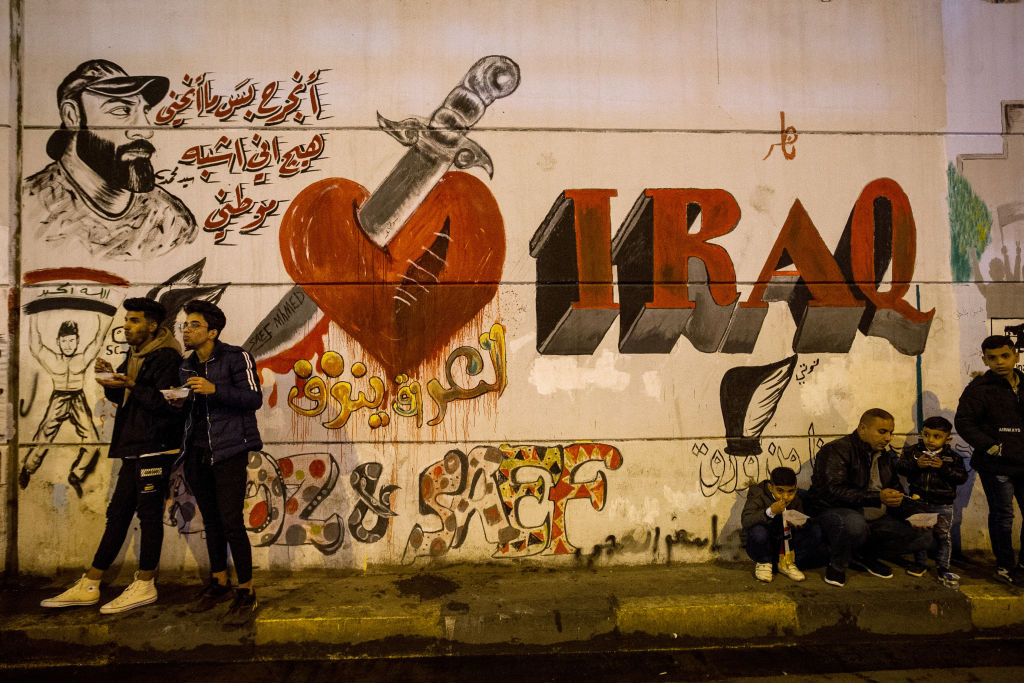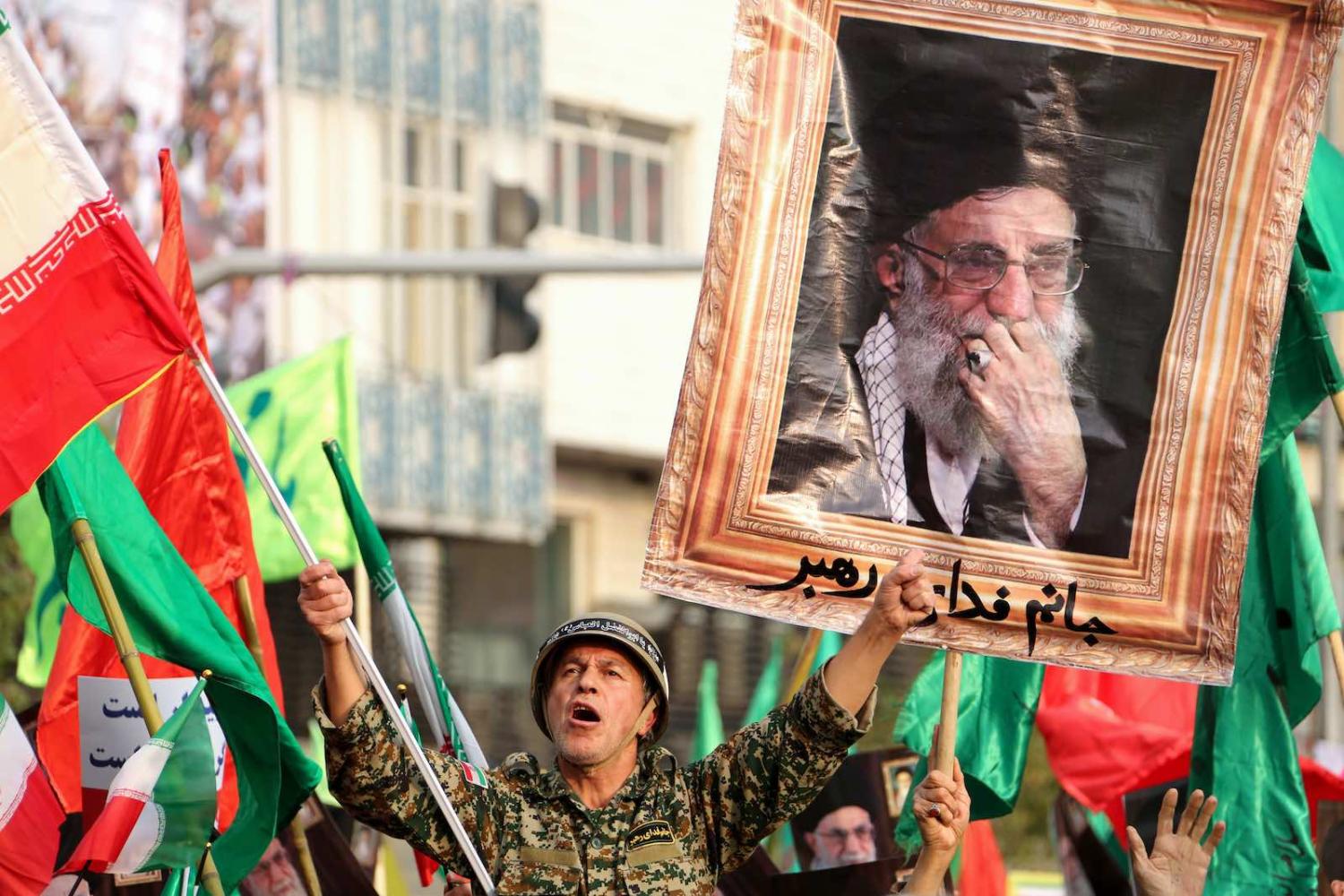From the burning of Iranian diplomatic outposts as part of massive months-long protests in Iraq, to slogans admonishing Iranian interference as part of anti-sectarian demonstrations in Lebanon, along with deadly rallies across cities at home in Iran, it’s been a bad month for the regime in Tehran.
It’s tempting to suggest events in the region point to the Iranian regime’s power being put to the test. The sophisticated state-imposed five-day internet blackout, designed to stop protesters from organising and mobilising, as well rendering the true scale of the violence and death toll unknown to the outside world, has also been seen as indicative that the regime is rattled. Washington was quick to suggest the protest movement is proof that its maximum pressure sanctions campaign is working to turn Iranians against their government.
Both interpretations are partially right, but also misleading in important ways.

Firstly, the current protest movements in all three countries – Iran, Lebanon, and Iraq – are nationalistic in nature and born primarily from economic, not ideological reasons.
In Iraq, it is significant that the torching of the Iranian consulate occurred in the Shiite holy city of Najaf, and surprising that protesters there have come from mostly majority Shiite bases. Protesters in both Iraq and Lebanon have directed their anger at Iran and its proxy and spiritual leaders, including Hezbollah’s Hassan Nasrallah. And the alignment of religious and spiritual Shiite leader Grand Ayatollah Ali al-Sistani with the protest movement in Iraq also presents a challenge for Iran.
But it is important to remember the domestic nature of the demands of demonstrators. They want the removal of the whole corrupt and patronage-driven systems that have led to crony-capitalism and economic hardship. Iranian-backed leaders are seen as part of this broken and inept system, but demonstrators are not chanting for the downfall of the Iranian government. Theirs remain nationalistic endeavours.
In Iran, protests began in response to fuel price hikes, and then morphed into broader political demands.
To conflate the events across the three countries would be to mistakenly see a grand, cross border Shiite uprising against the religious leadership in Iran that doesn’t exist.
Premature claims that the protests are a vindication of US policy only hands the regime a narrative win it really doesn’t deserve.
Secondly, while biting sanctions may have contributed to the conditions that have prompted Iranians to turn against their government, it’s wishful thinking to assume that people power will result in the overthrow of the regime any time soon. No regime is revolution proof, but the Iranian brand is pretty close, in no small part due to the network of irregular, religiously motivated militias it employs. Supreme Leader Ayatollah Khamenei has boasted of Iran’s know-how in putting down popular uprisings and so far has mostly succeeded. Meanwhile in Iraq, Iran has directed Iraqi generals to resort to open violence to suppress the uprising, killing over 400 and counting.
Like it did in Syria in 2011, the US has dramatically underestimated the lengths the regime will go to in order to quash unrest, overestimated its capacity for reform and arrogantly overstated the role of the US in guiding the outcome of protest movements.
It is true that these protests in Iran differ from those of the past in terms of scale and by drawing in poorer, politically underprivileged classes rather than the economic liberal elite of demonstrations in 2009. But these protests also differ in another important way; Iranians have previously directed a good deal of antagonism towards the US for its role in pinching the Iranian economy in a way that the regime has capitalised on. This time, anger over economic woes is reserved almost solely for the regime and its economic mismanagement. The regime’s claims that the revolutionary movement is a foreign cooked conspiracy aimed at regime change doesn’t wash anymore.
As such, premature claims that the protests are a vindication of US policy only hands the regime a narrative win it really doesn’t deserve, while also risking a derailment of the objectives the US claims to support.
There is no question the Iranian regime will continue on its path of ruthless repression. It’s unclear whether the protests have completely ceased and there is a chance they will spring up again, but so far have been put down efficiently. Reports now suggest over 7,000 Iranians have been arrested and we will probably start to hear reports of public hangings soon.
In all likelihood, this is not the demise of the Islamic Republic quite yet.
The only question really worth asking is what the response from the West should be. Once again the West (absent the US) is resorting to the only carrot and stick approach it has always used: return to compliance with the terms of nuclear deal or sanctions will increase, in the vain hope that economic hardship will increase popular pressure on the regime to the extent that it will capitulate to demands.
Iran is perhaps vulnerable, opening up opportunities to gain concessions, yet the current unrest in Iran and elsewhere provides less leverage than the Europeans and the US would like to think. So far Iran has indicated it can bide time to ride out this crisis and continue its defiance campaign. It will resort to its tried and tested method of exporting acts of aggression against its neighbours and disrupting oil supply chains to regain any leverage it feels it may have lost.
Further sanctions will only punish the Iranian people more. Even so, this is not the time to be capitulating to a brutal regime in the form of concessions in the hope it will return to a deal in a way that will only strengthen its domestic narrative. The West should heed Iran’s predictable threat to pull out of its commitments to the UN atomic watchdog if European parties to the deal triggered a dispute mechanism leading to fresh sanctions.
Where does it end? Perhaps the best answer is to do nothing. Make the decision one for Iran. In the meantime, greater efforts to sow discord between the Iranian regime and the proxy Shiite militia units it depends on in Syria and Iraq would could go some way in genuinely destabilising the regime and forcing it towards concessions.

